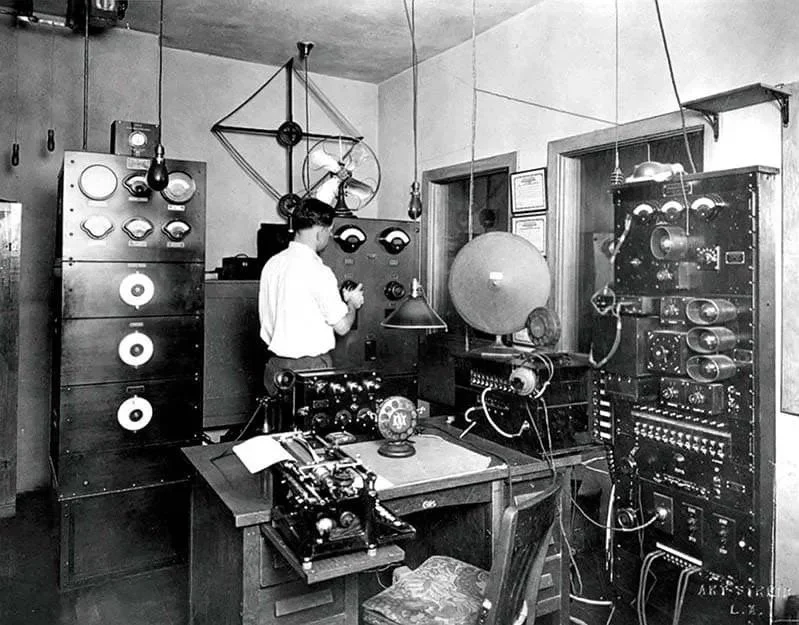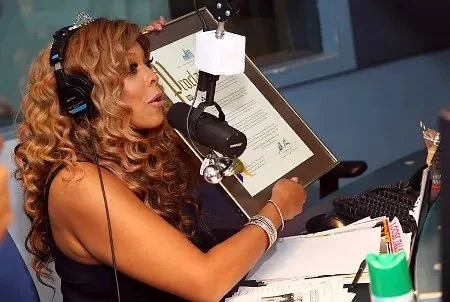03/01/2025
Radio Might Be the Answer
freedom from infinite choice
I realized something today while listening to the radio: I miss not choosing.
Every morning I open Spotify and freeze. Too many options. My brain hurts before I’ve even had coffee. 143 playlists I’ve made. Thousands of albums saved. Daylists. Discover Weekly. Infinite possibilities. And somehow, I end up playing the same stuff anyway.
But radio? Radio just plays. You turn it on. That’s it. Done.
When someone else picks the music, two amazing things happen: you discover stuff you wouldn’t choose yourself, and you share something with strangers. That song that sounds nothing like what you usually listen to? You might actually love it, but you’d never know because you wouldn’t have clicked on it. And right now, someone across town is hearing this exact same song. Maybe they’re tapping their steering wheel to the beat, just like you are. There’s something powerful about that.
Howard Stern’s career began with gigs taking him from Hartford to D.C., before landing in NYC in 1982.
We think having control makes us happy. It doesn’t. At least not always. Having infinite choice is exhausting. We weren’t built for this. The paradox of choice is real - too many options makes us less satisfied with whatever we pick. We’re always wondering if we should have chosen something else.
Radio removes that burden. For an hour or two, you can just exist. Listen. React. Feel. No decisions required.
Remember mornings before smartphones? Coffee brewing, newspaper unfolded on the kitchen table, radio playing softly in the background. There was something grounding about that ritual. The newspaper gave you a finite amount of information – not an endless scroll. The coffee gave you warmth and focus. And the radio? It connected you to the world outside your window.
My grandparents had this ritual for 40 years. Every morning: chai, newspaper, radio. The hosts became like friends. They knew their voices, their laughs, their quirks. That’s a relationship with media we rarely have anymore. Unlike today’s 24/7 parasocial relationships with influencers and content creators, their connection to these radio hosts was bounded by time, communal rather than personal, and refreshingly modest in scope. They didn’t expect constant access to their lives or feel entitled to their attention. The relationship existed within a specific context – those morning hours – and was no less meaningful for its limitations.
The KNX Transmitter, circa 1926.
Algorithms are clever, but they’re also predictable. They serve you more of what you already know. They keep you in your bubble. A good radio DJ? They might play a brand new local band right after a classic hit. They might connect two songs from completely different decades that share a lyrical theme. They might tell you a story about the artist that changes how you hear the song. Humans make connections that algorithms can’t. Humans surprise you. Algorithms just confirm what they already know about you.
Most radio DJs sound fake now. Too polished. Too “morning zoo.” But it doesn’t have to be that way. Imagine radio hosts who talk like regular people. Who admit when they’re tired or sad or confused about the world. Who get genuinely excited about a new album. Who have real conversations instead of reading promotional talking points. That’s what Gen Z could bring to radio. Authenticity. The same raw honesty that makes their TikToks and podcasts compelling.
There’s something special about knowing a show will be on at 8pm every Tuesday. It creates a ritual. A moment in the week to look forward to. “I never miss Emma’s show on Tuesday nights.” That's different from “I'll get around to that podcast eventually.” It’s an appointment. A commitment. Something that structures your time in a gentle way. And you’re not alone. Other people are tuning in too, at that exact same moment. There’s community in that synchronicity.
HBO and other streaming services have slowly brought this magic back with their Sunday night shows. Remember when everyone was watching Succession or now White Lotus at the exact same time? The Monday morning conversations at work about what happened. The collective gasps when something shocking went down. That wasn’t just about good TV – it was about experiencing it together, in real-time. Not bingeing at your own pace, but riding the same wave as everyone else. Radio has been doing this all along.
Throughout junior high and high school, I watched the Wendy Williams show every single day after school at 4pm on youtube. Williams got her start in radio!
This isn’t about nostalgia or bringing back the old days of radio. It’s about taking what was good about radio and making it relevant for now. Radio at its best is a break from decision fatigue, a way to discover new things, a shared experience, a human connection, a moment of surprise. We need these things more than ever. Our digital lives are increasingly isolated, algorithmic, and demand constant choice. Radio offers the opposite.
Maybe the most radical act in 2025 is to tune in at a specific time to hear what someone else has chosen for you. Maybe surrendering control is actually the path to discovery. Maybe the oldest broadcast medium is exactly what we need right now.
I’m turning the dial. I don't know what I’ll hear next. And that’s the point.
—
Extra notes:
In addition to attending Trump’s ’93 wedding, Howard Stern has hosted him on his show 41 times. Several of their infamous exchanges appear in his book, beginning with a ’95 chat about a Trump presidency, to which Stern says, “I’ll vote for you.”
How radio gave us BBC:
Other fun facts:
The first commercial radio station began broadcasting in 1920 (KDKA in Pittsburgh), but amateur radio operators were sharing music and talk as early as 1906.
During the Golden Age of Radio (1930s-1950s), families would gather around their radio sets for entertainment, with some radio shows drawing audiences of over 40 million listeners.
Radio waves travel at the speed of light - 186,000 miles per second.
FM radio was invented in 1933 but didn't become widely popular until the 1960s when it became the preferred format for music due to its superior sound quality.
Some radio signals can bounce off the Earth's ionosphere, allowing them to travel thousands of miles beyond the horizon - known as "skywave" propagation.
The world's oldest still-operating radio station is KCBS in San Francisco, which began regular broadcasting in 1909 (originally as "San Jose Calling").
Radio has consistently survived predictions of its demise - after television became popular, after cassettes, after CDs, after mp3s, and now after streaming.
Over 90% of Americans still listen to radio weekly, making it one of the most widely used media platforms despite the digital revolution.
Many famous podcasters started their careers in traditional radio, bringing those skills to the new medium.
Community radio stations often operate on shoestring budgets with volunteer DJs who are passionate about sharing their musical discoveries.
s/o to my friend Rachel Mazer who ran her own show at CJSW for a while and sometimes played music for me <3
Some radio DJs still use physical media like vinyl records or CDs for their shows, creating a tactile connection to the music they share.
Radio remains a primary source of information during emergencies and natural disasters when internet and cell service may fail.



